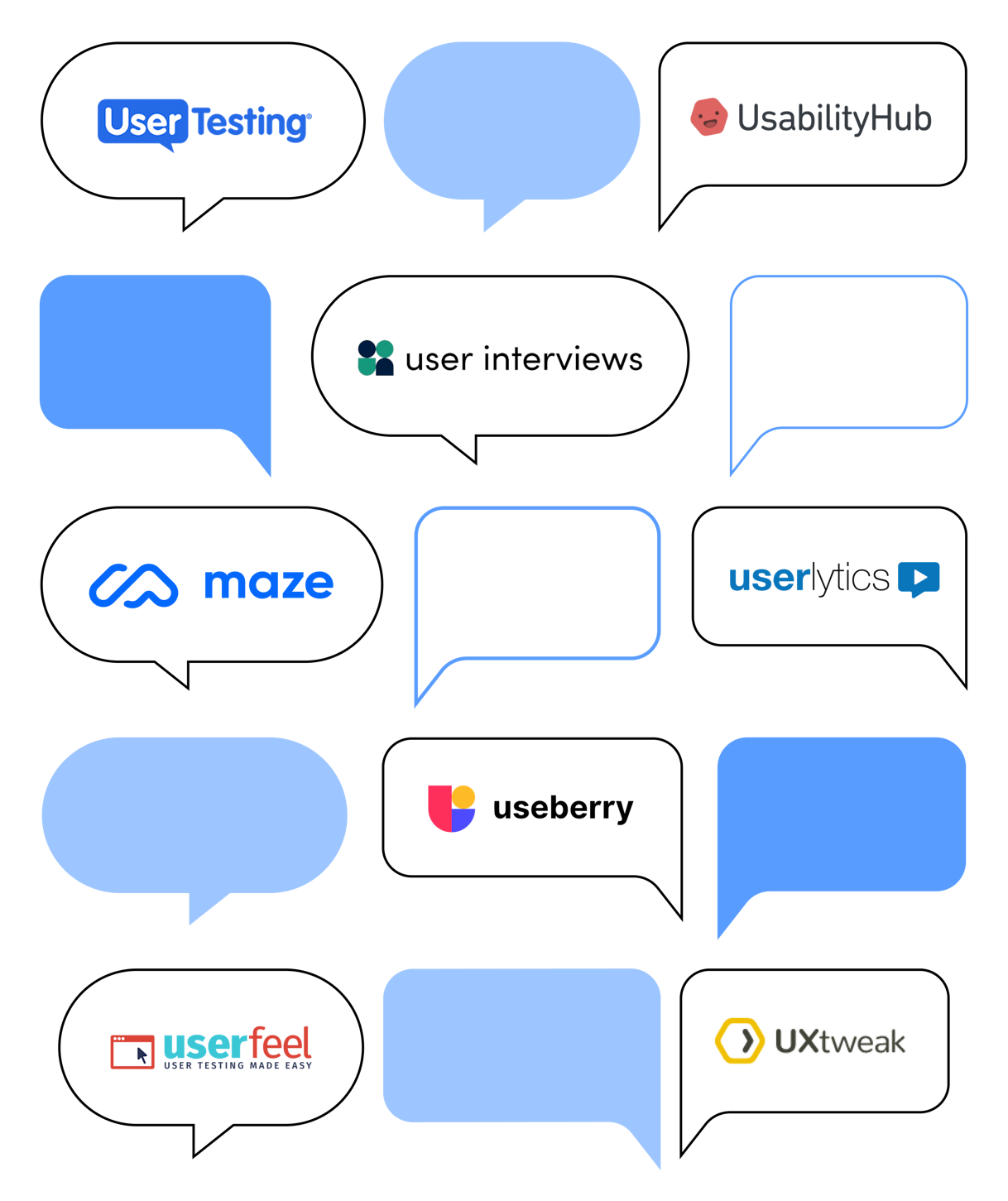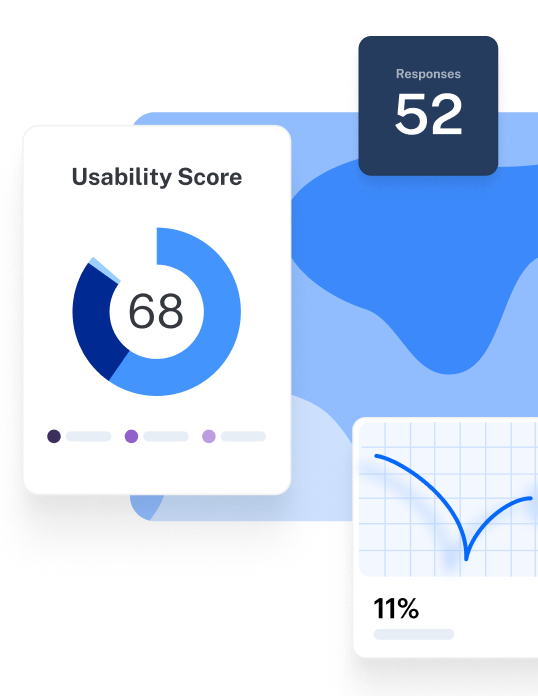The right research platform helps you continuously align your team, product, and users. But that means it needs to offer an extensive range of research tools and reports—at the right price—to support your product as you scale.
Some product teams choose Userlytics for this, but many users have reported that the platform doesn’t give them the features they need at a price that works. If you want to keep your options open, there are plenty of other research platforms out there which might suit you better.
In this article, we’ll cover the top seven Userlytics alternatives, including key features and pros and cons, so you can find a solution that empowers your whole team (without breaking the bank).
Why look for an alternative to Userlytics?
Userlytics is an adequate pay-as-you-go solution for user testing. You can use it to create tasks and surveys, run usability tests, and request video feedback. With solutions for participant recruitment and reporting, it works for teams who are just getting started with product research.
If, however, you’re looking for more advanced functionality, or a platform that’s affordable for continuous research that can scale alongside your product, Userlytics might not be right for you. Here’s more about why you might be considering some Userlytics’ competitors:
Its pricing system makes continuous research difficult
Userlytics offer several pay-as-you-go packages with prices based on the number of participants on each panel, the length of each test, the number of admin users you want to add, and the features you want to access. Because of this, it quickly gets expensive to conduct regular research and keep your product aligned with users.
Some plans are missing research methods
If you do opt for the more affordable packages, you’ll miss out on some key research features—which, in contrast, are offered across all plans by several Userlytics’ competitors, such as Maze:
- Prototype testing to test usability and design on real users and preempt UX issues
- Card sorting to gather important insights into how users categorize and organize information
- Tree testing to streamline your information architecture and spot potential issues, such as unclear categories or poor navigation
Without access to these methods, you can’t get a full picture of user behavior and you’ll struggle to scale your research.
The reporting functions leave teams needing more
There’s little point investing time in research if no one will take the results on board. Having a clear, eye-catching data visualization versus a block of hard-to-absorb numerical data can be the difference between getting stakeholder buy-in and being forgotten.
While Userlytics offers ‘in the box’ reporting, reviews claim it leaves something to be desired, with unclear navigation, limited data displays, and a friction-filled UI. So if sharing research takeaways and insights that impress the team is important to you, then you might want to look elsewhere.
Top 7 Userlytics alternatives
Here are our top seven Userlytics alternatives. Read on for an overview of each tool, their pros and cons, and pricing information.
- Maze
- UserTesting
- UsabilityHub
- User Interviews
- Useberry
- UXtweak
- UserFeel
1. Maze
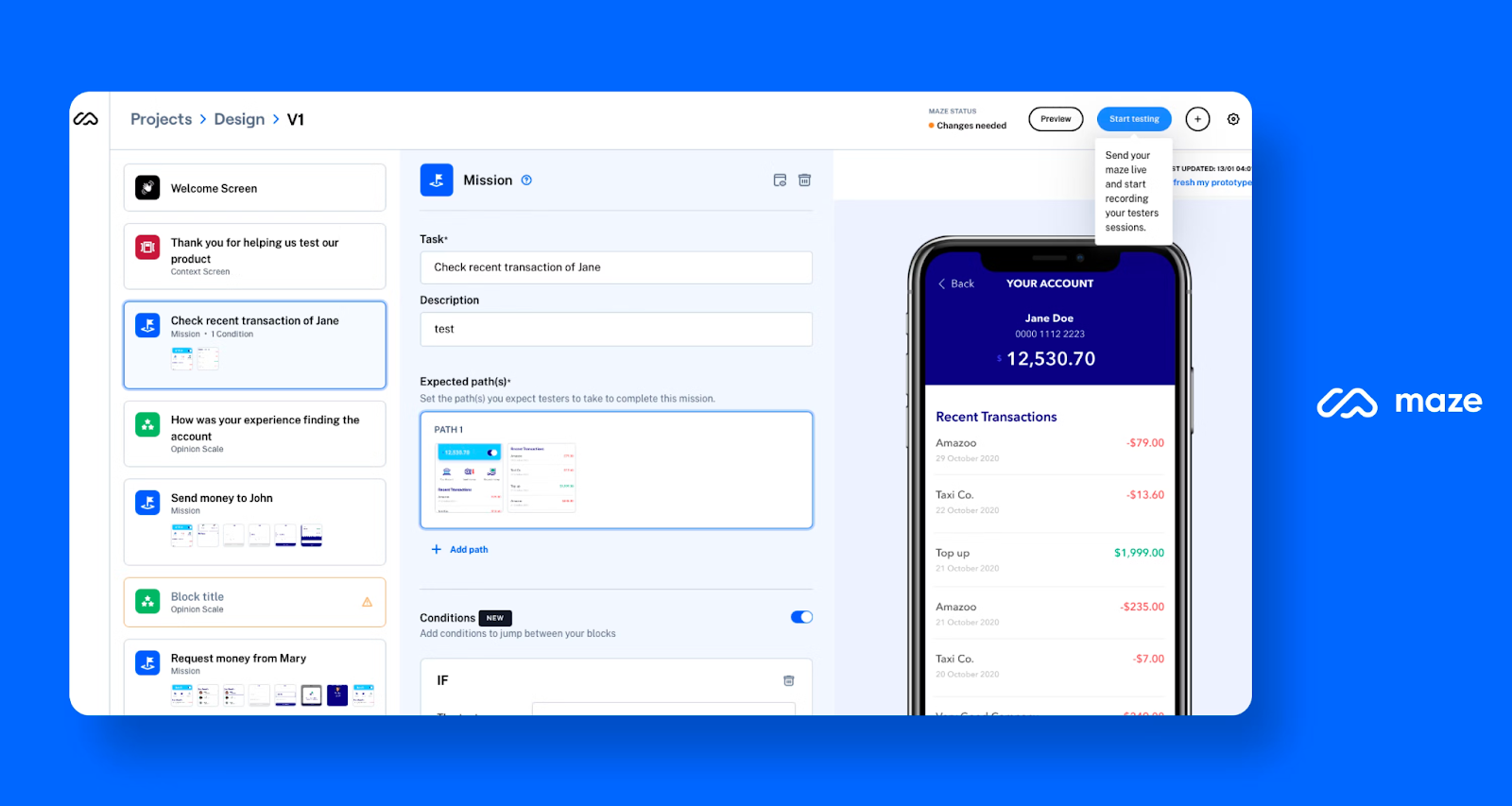
Maze is a continuous product discovery platform that empowers product teams to act on real user insights. Supporting everyone to conduct product research at every stage, Maze helps design teams validate hypotheses, and allows developers to gather user insights and make data-driven decisions.
Accessing participants is easy with Reach, which allows you to email people straight from your CRM or use integrated Participant Panels for recruitment. Create quick tests for anything from prototypes to usability—and continuously review insights to create better user experiences and shorten time-to-launch.
Pros
- Template library with over 50 pre-built templates so you can quickly test copy, usability, information architecture, and more
- Testers panel with over 127,000+ vetted participants and filters so you can quickly find the perfect match for your personas
- Capabilities for multiple research methods including five-second testing, A/B testing, card sorting, tree testing, prototype testing, usability and live website testing
- Video recording and screen recording so you can see how users react to your product and observe interactions in real-time
- Integrations with design tools like Figma, Sketch, Invision, and AdobeXD, so you can directly create and run prototype testing
- Automated reporting on metrics such as bounce rates, misclicks, and heatmaps with customized views and filters—plus, you can also download or share reports across your favorite tools like Slack, Notion, FigJam, and Miro
- Reach so you can send tests as targeted campaigns to existing customers or previous participants, with personalized messaging, email domain, and signatures
Cons
Maze doesn’t yet offer moderated testing. However, with the Clips feature or a simple Zoom connection, you can still run these types of tests inside the platform.
Pricing
Maze offers three pricing options for organizations of all sizes:
Maze vs Userlytics
Not only are Maze’s packages a lot more affordable than Userlytics’, but they come with extra features. Even the free Maze plan gives you access to prototype testing, which is only available in Userlytics’ most expensive package. Apart from that, you’ll notice two key differences between Maze and Userlytics:
- Intuitive dashboard: Some users complain that Userlytics isn’t the easiest solution to use. Maze, on the other hand, is designed to enable everyone to do great research, regardless of their background.
- Continuous development: With Userlytics, it can be costly to test at scale due to the pay-as-you-go model. Meanwhile, Maze is built to support continuous development on even the Free Forever plan, and the Org package comes with unlimited projects.
The verdict:
Choose Maze if you want a cost-effective solution to continuously optimize your product. With extensive research functionality, including prototype testing, tree testing, and card sorting available across all packages, you can stay closely aligned with your users as you grow your product.
2. UserTesting
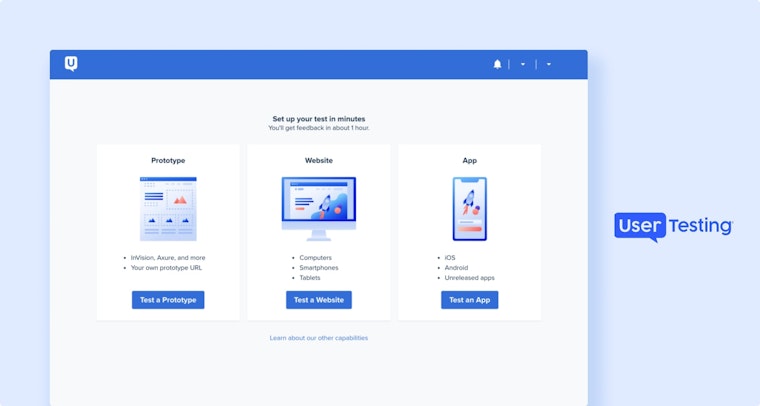
UserTesting is a versatile user research and feedback platform that offers both moderated and unmoderated tests. It’s particularly well known for its live conversation feature, which allows you to schedule video interviews via Zoom. Unlike Userlytics, it also handles the scheduling and reminders for this, making it a good solution for large, busy teams.
Pros
- Access to a global contributor network and customer communities makes it easy to organize conversations with a range of participants
- Like Maze, UserTesting also offers a test template gallery, though it only has around 20 templates
- It has high-quality transcriptions and includes keyword maps
Cons
- UserTesting enables prototype testing but only integrates with AdobeXD, so it’s not ideal if you rely on a different design tool
- Users have raised issues about the suitability of testers, and describe that the demographic filters don't give enough control over who participates
- UserTesting’s packages are reported as some of the most expensive on the market
Pricing
UserTesting doesn’t publicly share its prices but users state that they start at $15,000 per seat/year. Here’s what’s included in each package:
UserTesting vs Userlytics
Both UserTesting and Userlytics present challenges when it comes to moderated testing. UserTesting has some issues with the quality of participants, while Userlytics requires extra time to schedule conversations manually.
Where the two tools contrast most is in their packages. UserTesting is more expensive but brings extra useful testing features, such as templates, while Userlytics is cheaper, but still not the best deal on our list.
The verdict:
If you’re a larger company with a budget to match and the capacity to run larger-scale tests, opt for UserTesting over Userlytics because of its advanced functionality.
However, it’s important to note that organizations of all sizes can find these features at a more affordable rate by looking at some of the other options on this list.
3. UsabilityHub
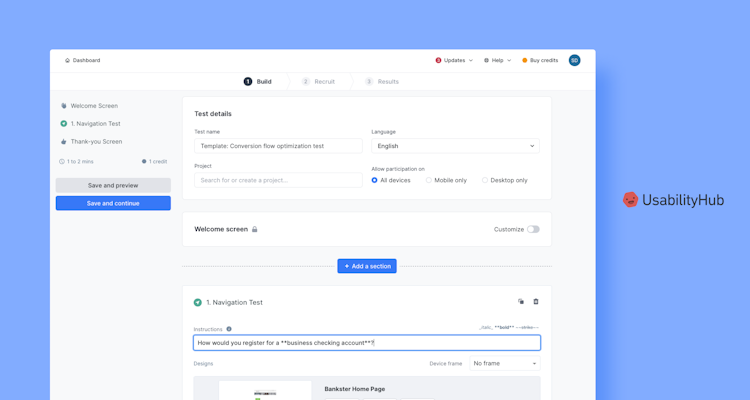
UsabilityHub is an unmoderated tool that makes it easy for you to run tests without extensive setup. Like Maze, it includes customizable templates for tests like validating designs or assessing copy. Its unique pay-per-answer pricing model also supports fast research by allowing you to pay more when you need answers more quickly.
Pros
- UsabilityHub gives you access to multiple testing methods like five-second, prototype, and preference tests so you can get varied user insights
- It’s designed for non-researchers so it’s appropriate for anyone to use
- The Basic plan comes with unlimited responses, so may be more affordable than other tools
Cons
- UsabilityHub doesn’t offer session recordings, so you’ll miss out on live insights from users
- You need to sign up separately for the recruitment panel, which also comes with an extra charge
- UsabilityHub only integrates with Figma, so you’ll need to look elsewhere if you use other design tools
Pricing
Prices based on annual subscriptions:
UsabilityHub vs Userlytics
UsabilityHub and Userlytics offer a lot of similar unmonitored testing features, including prototype and preference tests. However, UsabilityHub supports a longer-term approach to product iteration, by allowing you to pay per test, while Userlytics is a better fit for organizations that run fewer tests or have larger budgets.
The verdict:
If you’re looking for an affordable way to run tests at scale, UsabilityHub is a better solution than Userlytics. Bear in mind, however, that you have to pay separately for the recruitment solution, so you can only scale so far.
4. User Interviews
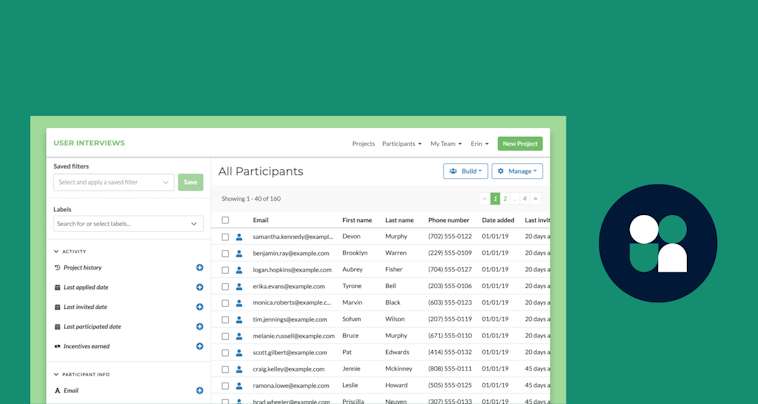
User Interviews is a simple testing platform designed for small teams, with features for participant recruitment, testing, and data analysis. After creating screening questionnaires, you can easily identify and select the most suitable participants. It’s convenient to then hold interviews, analyze data and set up follow-up studies.
Pros
- Like Maze, User Interviews is designed to be easy for all departments to use, and it comes with a fairly intuitive interface
- All test participants are screened and verified so you can feel confident in the quality of their responses
- You can easily build follow-up studies inside the same platform
Cons
- User Interviews doesn’t offer features like video or screen recording, card sorting, and live website testing
- The reporting functionality is less advanced than a platform like Maze or Useberry
Pricing
User Interviews offer a pay-as-you-go package at $45 per session and three monthly packages starting at $175 a month. You can also pay extra to add on recruitment solutions.
User Interviews vs Userlytics
User Interviews is a more basic tool than Userlytics. Features like tree testing, card sorting, and live website testing are unavailable across all packages while, with Userlytics, they’re included in the advanced package (or the free package, for other tools like Maze on this list).
User Interviews is, however, easier to use and more affordable than Userlytics. And it even comes with a dedicated tool for creating follow-up studies.
The verdict:
If you’re looking for an intuitive dashboard and cost-effective packages, User Interviews will be a better fit than Userlytics. However, many of the solutions on our list offer more advanced functionality for a similarly low price. If you want to run advanced tests and compile varied reports while focusing on continuous development, it’s worth considering Maze.
5. Useberry
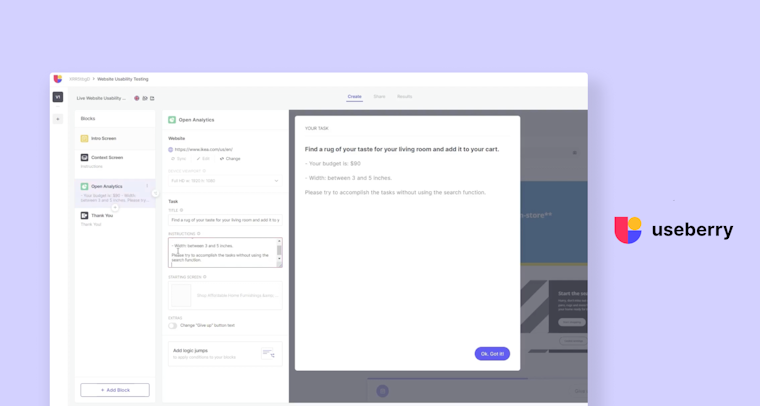
Useberry is a user research platform that helps businesses gather valuable insights through usability testing, feedback surveys, and prototype testing. With a simple interface and analytics, it helps you make data-driven decisions throughout the product lifecycle.
Pros
- Like Maze, it has a great heatmap tool that illustrates the user journey within your product
- Useberry comes with a participant pool of 290k testers so you can ensure a high volume of responses
- It integrates with a number of design software solutions, including ProtoPie, Adobe XD, Figma, and InVision
Cons
- Useberry has no management database so you can't track and manage your own testers
- You have to conduct moderated research separately and there is no easy integration with a solution like Zoom
Pricing
Useberry offers three packages:
Useberry vs Userlytics
The main difference between Userlytics and Useberry lies in which stage of the testing process they are best for. Userlytics offers a broader range of options for creating tests and managing participants, while Useberry provides a more streamlined user experience on the reporting side.
UserBerrry is also more affordable, and you can run unlimited projects inside the Pro package rather than paying for each test, as with Userlytics’ pay-as-you-go model.
The verdict:
Since Useberry is more affordable than Userlytics and comes with additional reports, it could be a good option if you’re looking to run frequent tests and analyze the results in depth. If, though, you’re looking for a solution that supports moderated testing and comes with a great database, you should take a look at Userlytics or more affordable solutions like Maze.
6. UXtweak

UXtweak is a product testing platform which offers comprehensive analytics and extensive research methods. It also allows your team to run tests on fully released mobile apps and mobile websites. This means you can collect insights through screen and voice recordings to analyze how users interact with your app.
Pros
- Like Maze, UXtweak also offers live website testing with user voice and session recording features
- UXtweak includes an advanced mobile testing tool in which you can assess navigation flow and visual design
- UXtweak integrates with a range of design tools including Figma, Invision, and Axure
Cons
- Users note that UXtweak’s setup and analytics processes aren’t as user-friendly as other solutions
- If you want to add participants to your custom database in UXtweak, you need to do it manually which can be time-consuming
Pricing
UXtweak offers a free plan for one user only, and then three paid plans:
UXtweak vs Userlytics
Both UXtweak and Userlytics offer a wide range of test types, including mobile testing, but UXtweak is more comprehensive as it includes features like heatmaps and screen recordings. The main difference between the two solutions is that Userlytics is designed to be easy for new product researchers while UXtweak is best suited to more experienced users.
The verdict:
UXtweak is better suited to teams who are confident with user research already and won’t be phased by difficult onboarding processes. If you’re less familiar with different types of research, it’s worth considering another tool on this list with a smoother learning curve.
7. UserFeel
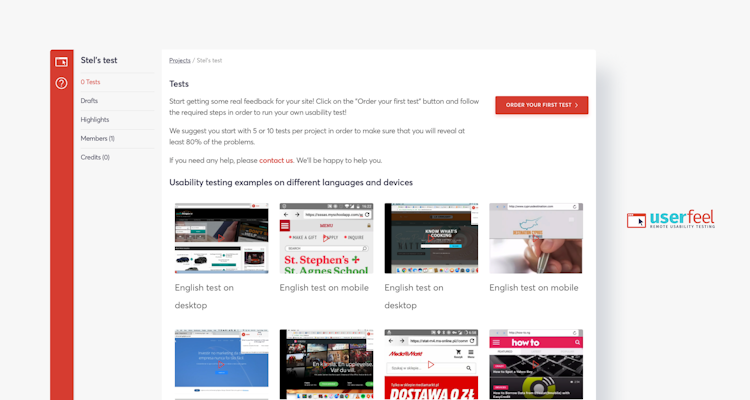
UserFeel is a user testing platform designed to make it easy for researchers to connect with a diverse pool of testers, allowing you to search for participants with the demographic background you’re looking for and then efficiently set up tests across web and mobile.
Pros
- UserFeel includes a range of participants who speak over 40 languages, so you can more easily find insights for products with a multinational audience
- Like other tools on this list, UserFeel encourages responses by not requiring participants to register before completing tests
- As with Maze, Userfeel offers video capture, and allows your team to collaborate by adding notes on each video response
Cons
- Reviews mention it can take a while to gather participants and generate insights on UserFeel, meaning you may lose time that could be spent on running new tests
- There are some users who report issues with the quality of participants—for example, describing that the people they spoke to were from a different country than was advertised
Pricing
UserFeel operates on a pay-as-you-go model. Its pricing options look like this:
UserFeel vs Userlytics
Both UserFeel and Userlytics use a pay-as-you-go pricing model that’s better suited to ad-hoc tests than ongoing continuous product development.
Where the tools differ is in their tools for participant recruitment. UserFeel offers a far wider pool of testers and demographic filters to help you find the best fit. It also includes scheduling tools to streamline the process of setting up conversations.
The verdict:
If you’re running large-scale tests across several countries, UserFeel could be a good solution for you. However, if you don’t have the time to spare on retesting, it could be best to opt for Userlytics or another solution that has fewer reported issues with participant quality.
What should you look for in a Userlytics alternative?
Research tools should make it as easy as possible for you to collect insights that keep your product aligned with your users. Let’s explore what features the ultimate tool should include, so you can keep these in mind when making your final choice.
Testing methodology
First, you need to decide whether you want to gather qualitative insights, like user behavior and sentiment, or quantitative data. The latter allows you to generate a higher volume of information, while the former helps you delve further into your users’ experiences. If you’re looking for a solution that offers both types of data, try Maze.
It’s crucial to consider the research methods offered by a tool. Different methods support different purposes, so you’ll likely need to experiment with features like usability testing, tree testing, and prototype testing as you scale. Many tools offer certain methods only as add-ons or higher price points, so decide on the methods that matter to you, and opt for a platform which supports ongoing, varied testing.
Analytics and reporting
You need a tool which turns research into actionable data to inform product decisions. Look out for a solution that reports on metrics like bounce rate and session duration, with visuals like heatmaps to track your users. This give you the opportunity to build out a comprehensive understanding of how your users experience your product, and benchmark against past and future results.
To avoid getting bogged down in the data, it’s worth prioritizing a tool that is able to filter and organize data and create clear, customized reports for different audiences. For example, you might want to create broad overview reports for stakeholders while providing granular insights on specific tests for your design team.
Design integrations
To avoid the manual work of exporting and uploading designs, you need a solution that integrates with your design platform. Look out for a tool that allows you to test clickable prototypes from Figma, AdobeXD, InVision, and Sketch to streamline research collaboration. This will allow you to gather feedback and insights from stakeholders and users more efficiently, and iterate on designs faster.
Which is the best alternative to Userlytics?
The best product research platform will give a wide variety of actionable insights and be easy to set up. But to find the right tool, you have to weigh up costs and features.
Simpler platforms like User Interviews and UserFeel may have everything you need if you’re just starting out with product research. Userlytics does beat those tools for advanced reporting and recruitment solutions, but with a pay-as-you-go pricing model, running continuous product research gets expensive quickly.
If you’re looking for a cost-effective way to uncover fast quantitative and qualitative insights, consider Maze. This comprehensive platform is designed to simplify product research at any scale for any user, so you can get high-quality feedback from real participants without the hassle. Plus, detailed and customizable reports provide a way to easily show stakeholders the value of your work, without the manual labor of sifting through hours of research.
Frequently asked questions about Userlytics alternatives
What is Userlytics?
What is Userlytics?
Userlytics is a pay-as-you-go product research platform in which product managers, researchers, and designers can create tasks and surveys, run usability tests, and request video feedback. It also includes solutions to help you find participants and analyze your results.
How much does Userlytics cost?
How much does Userlytics cost?
Userlytics’ pay-as-you-go model works like this:
DIY: $499—$999/year
- 2—5 seats
- Unlimited unmoderated participants from 3rd party
- 60 mins session duration
- 20—100 AI transcriptions per month
- 50 moderated participants from 3rd party
- Moderated participants from Userlytics panel at $138 per participant
Enterprise: $34,000—$500,000/year
- Unlimited Admin & User Accounts
- Website, App, & Prototype Testing
- QA Review of Panel
Surveys - Picture-in-Picture Recording
- Screener Questions
- Moderated Testing
- Card Sorting
- Tree Testing
- AI Transcriptions
- 30-min Session Increments
- Highlight Reels
- Advanced Demographic
- Advanced Metrics
- Sentiment Analysis
Custom plans: Not disclosed
Same as Enterprise plan
What are Userlytics’ top competitors?
What are Userlytics’ top competitors?
Other pay-as-you-go product platforms on the market include User Interviews and UserFeel. More widely, Userlytics’ top competitors include Maze, Usability Hub, Useberry, UXtweak, and UserTesting.



